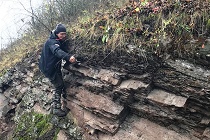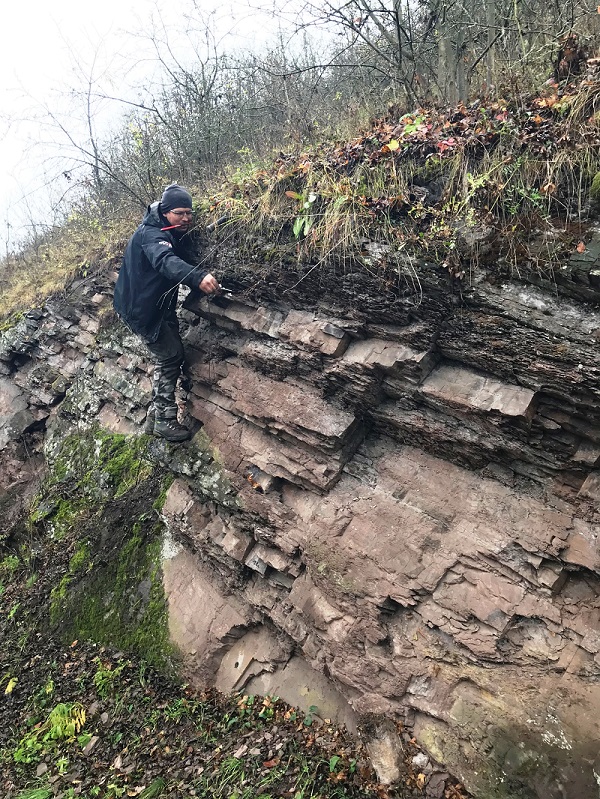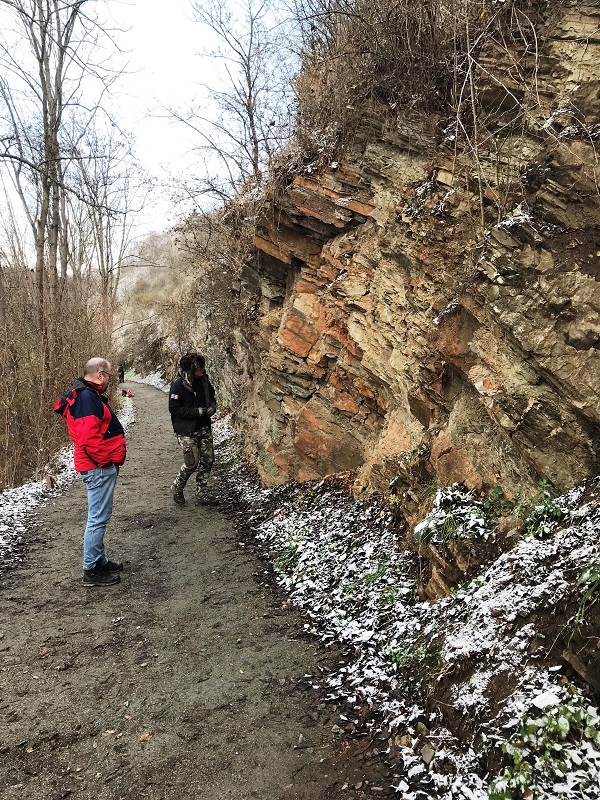 n 2022, the Polish Geological Institute - NRI signed a cooperation agreement with the Faculty of Science (Faculty of Science) of Masaryk University in Brno. However, the tradition of cooperation with the Czech university dates back many years.
n 2022, the Polish Geological Institute - NRI signed a cooperation agreement with the Faculty of Science (Faculty of Science) of Masaryk University in Brno. However, the tradition of cooperation with the Czech university dates back many years.
Thanks to its hospitality, employees have had the opportunity to take cathodoluminescence photos of petrographic preparations, or easier access to Cambrian and Precambrian rocks of the Brno massif, some of which have their counterparts in Upper Silesia, but are there not on the surface, as they do in Moravia, but under the cover of younger sediments.
A recent result of this collaboration was a publication in the Precambrian Research journal entitled "Mid-Ediacaran bimodal magmatism and peri-Baltic affinity of the Brunovistulian terrane documented by the U-Pb isotope and palaeomagnetic data from the Brno Massif (Central Europe)" (2021, vol. 358, pp. 196-147, authors: J. Nawrocki, J. Leichman, M. Panczyk).
This year's PGI-NRI expedition to the Brno region (team consisting of Prof. Jerzy Nawrocki and Dr. Krystian Wójcik) was aimed at identifying more exposures and rock formations that could provide relevant data for modern earth sciences. On the Czech side, Prof. Jaromir Leichman, vice dean of the Faculty of Science at Masaryk University, is the main person collaborating before and at this stage.
A unique profile of predominantly red and brown clastic rock from the Carboniferous and Permian boundary, which is exposed along a stretch of several hundred meters in the Oslavy River valley in the town of Oslavany, was finally selected for the study. The uniqueness of this profile and a whole series of subsequent exposures of Autunian rocks in the valley of the aforementioned river (which in total provide about 5 kilometers in thickness of rock formations) lies not only on the boundary between two geological periods within it, but also in the exceptionally rapid rate of deposition, making it possible to reconstruct even subtle changes in the geomagnetic field in the early Permian. This is a period when the field was almost exclusively of reverse polarity (the so-called Kiaman epoch, spanning the time from 318 to 265 million years). Moreover, the insets of volcanogenic rocks found in the profile should allow us to create a precise chronostratigraphic framework for these changes.
The Kiaman reverse polarity megachron of the geomagnetic field is one of two well-identified periods in Earth's history when one polarity of the geomagnetic field dominated for tens of millions of years. The other megachron, but with normal polarity, characterizes the Early Cretaceous.
The magnetic field protects the Earth from cosmic radiation. Decreases in its intensity, which usually accompany its inversions, are a threat to living organisms. In the Quaternary, the geomagnetic field also underwent short-lived (hundreds to thousands of years) inversions, or so-called excursions or paleomagnetic events. Hence, learning about the mechanisms of the geomagnetic field during unusual epochs of its long-term monopolarity is of great importance not only for science.
The profile from Moravia offers a chance to document such excursions (if there were any) from about 300 to 295 million years ago, which would be a significant achievement in the study of the ancient structure of Earth's geomagnetic field.

Dr. Krystian Wojcik during measurements of the orientation of the lowest Permian rock layers in the Oslavany profile
In addition to magnetostratigraphic and isotopic studies of rocks from the Carboniferous-Permian boundary, it is also planned to continue isotopic identification of Precambrian crystalline rocks in Moravia.

Prof. Jaromir Leichman presents a profile of Oslavana. At the wall of the unveiling, Dr. Krystian Wojcik
To learn about the methodology of this research, a PhD student from Masaryk University is currently interning at PGI-NRI's SHRIMP IIe ion microprobe laboratory.
Text and photos: Jerzy Nawrocki
Translated by: Tomasz Trzpil














 PGI-NRI offer
PGI-NRI offer Mineral resources of Poland
Mineral resources of Poland  Oil and Gas in Poland
Oil and Gas in Poland 




 Subscribe to RSS Feed
Subscribe to RSS Feed